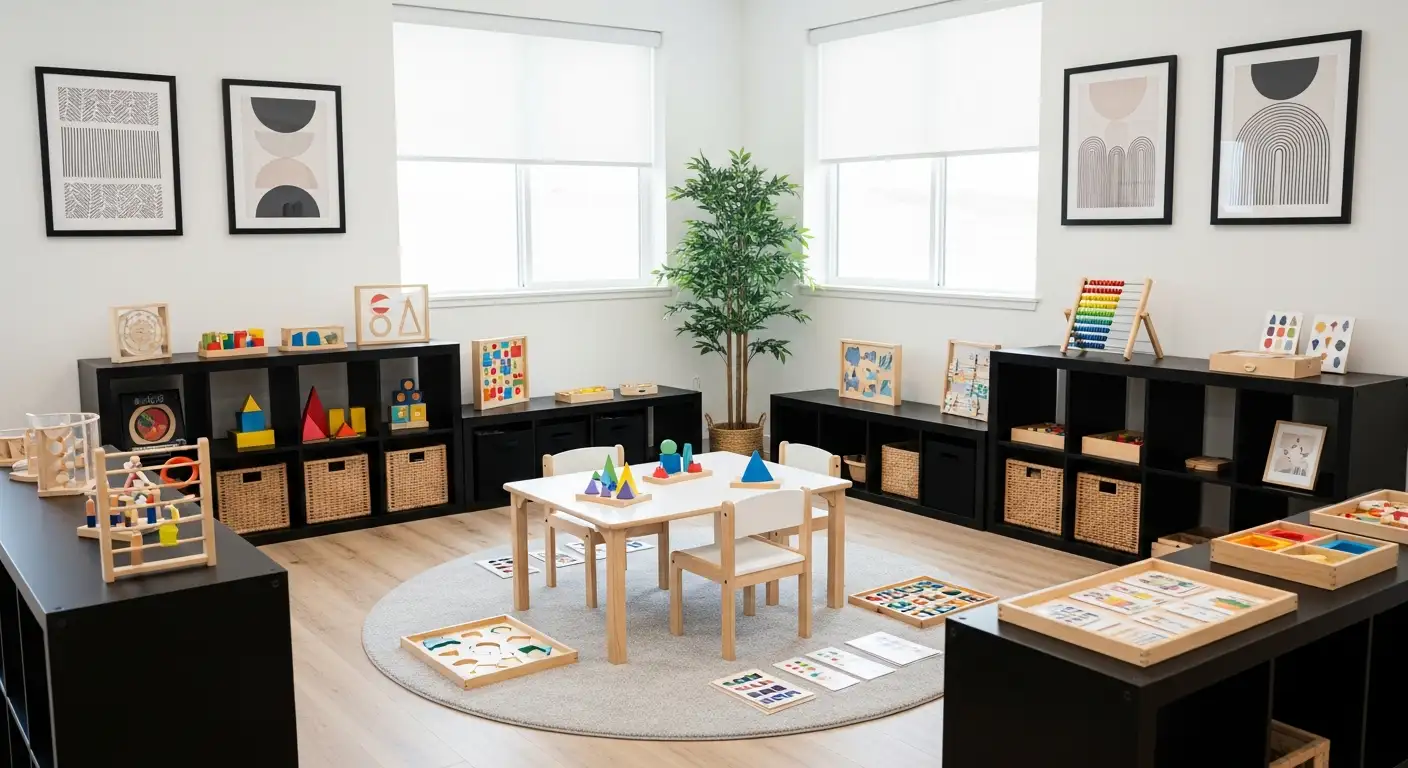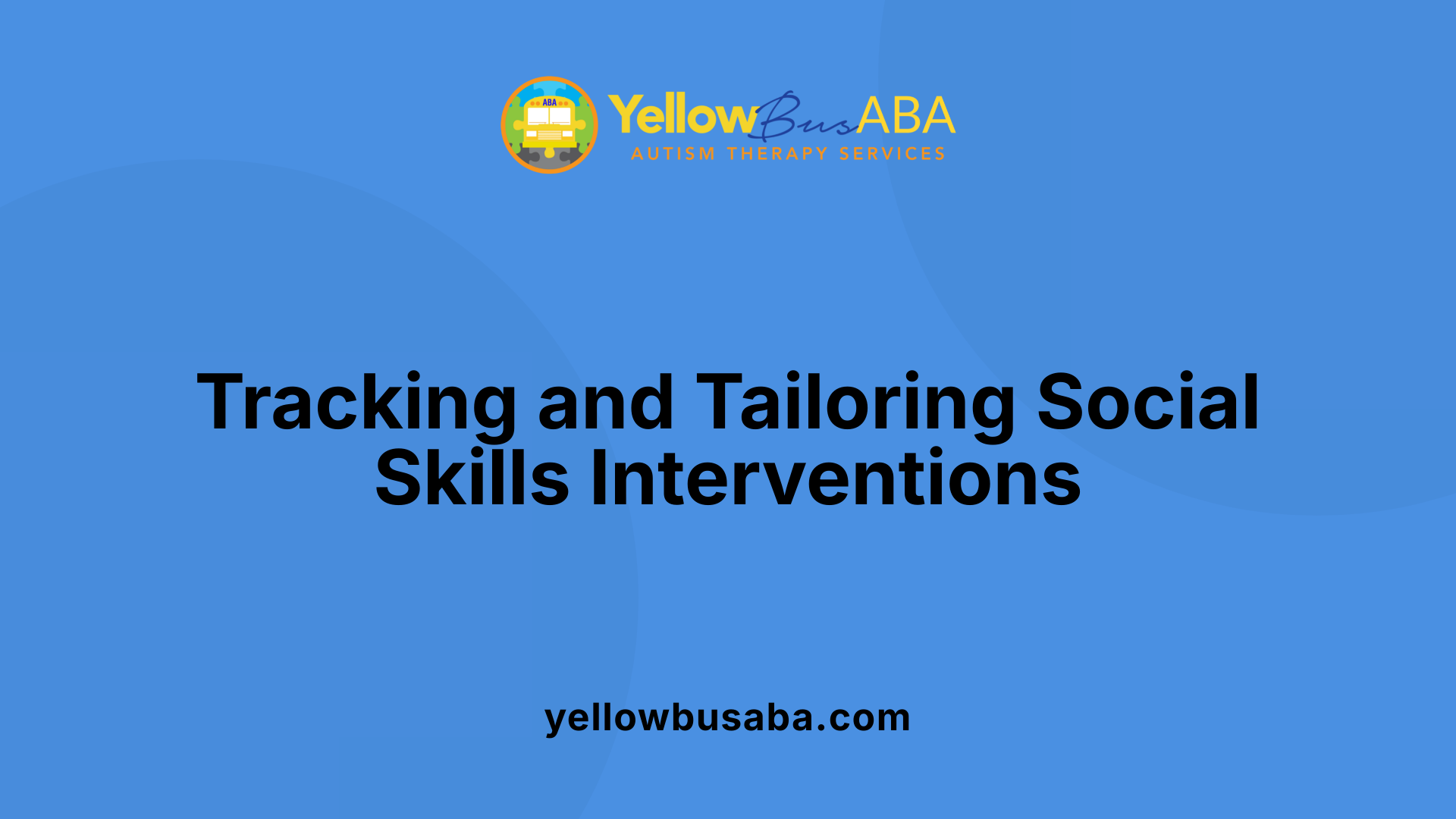Teaching Patience and Turn-Taking Through Play
November 26, 2025
Harnessing ABA Therapy to Foster Patience and Turn-Taking in Children with Autism

Understanding ABA Therapy’s Role in Social Skill Development
Applied Behavior Analysis (ABA) therapy has transformed approaches to supporting individuals with autism, especially in cultivating essential social skills such as patience and turn-taking through structured play. This article explores how ABA techniques are applied to teach these skills effectively, the role of professional providers in therapy delivery, and the broad benefits children gain through these interventions.
What is Applied Behavior Analysis (ABA) Therapy?

Definition and origin of ABA therapy
Applied Behavior Analysis (ABA) therapy is a scientific method developed in the 1960s to understand behavior and its relationship to the environment. It applies principles of learning and behavior change to foster positive developmental outcomes.
Scientific principles behind ABA
ABA therapy relies on behavior analysis, which studies how behaviors can be influenced by modifying environmental factors. It focuses on encouraging desirable behaviors through reinforcement and reducing less helpful ones, all grounded in observable, measurable data.
Focus on behavior modification and learning
The therapy aims at improving skills like communication, social interaction, and independence by teaching new behaviors and reinforcing them. Techniques include positive reinforcement, prompting, and using natural settings to generalize skills across environments.
Personalization and goal-setting in ABA
Before therapy begins, practitioners assess individual social skill deficits to tailor goals that are specific, measurable, and achievable. This personalization ensures that interventions address unique needs.
How ABA therapy supports individuals with autism
ABA therapy serves as an evidence-based intervention for autism by helping individuals develop communication and social skills, interpret social cues, and engage more effectively with others. Delivered by board-certified behavior analysts, it uses ongoing assessments and data to track progress and adapt goals, ultimately enhancing confidence and quality of life.
The Role of Board Certified Behavior Analysts in ABA Therapy

Who Typically Provides ABA Therapy Services?
ABA therapy is primarily provided by Board Certified Behavior Analysts (BCBAs), professionals thoroughly trained in behavior analysis and the science of learning. These experts design customized therapy plans that cater to the specific needs of each child, focusing on improving social skills, communication, and independence.
Supervision and Therapy Delivery Roles
BCBAs not only develop treatment plans but also supervise therapy sessions to ensure effective delivery. They oversee therapists and behavioral specialists who implement the daily interventions, using techniques such as positive reinforcement and continuous data collection to evaluate progress and make informed adjustments.
Training Parents and Caregivers
An important aspect of ABA therapy is equipping parents and caregivers with skills and strategies to reinforce learning outside of therapy sessions. BCBAs provide this training to create consistent environments that support the child's growth and help generalize new skills across daily routines.
Settings Where ABA Therapy Is Provided
ABA therapy is flexible in location, offered in homes, schools, and community settings. This variety helps children apply their social and communication skills in real-world contexts, fostering independence and smoother social interactions beyond clinical environments.
| Role | Responsibilities | Impact on Therapy |
|---|---|---|
| Board Certified Behavior Analyst (BCBA) | Designs plans, supervises therapy, trains caregivers | Ensures evidence-based, personalized, and effective interventions |
| Therapists/Behavioral Specialists | Deliver one-on-one or group interventions under BCBA guidance | Implement daily therapy and collect data for progress tracking |
| Parents and Caregivers | Reinforce skills during everyday routines | Promote consistency and generalization of learned behaviors |
This collaborative and structured approach, underpinned by the expertise of BCBAs, is vital for achieving positive outcomes in ABA therapy.
Assessment and Individualized Goal Setting in ABA Therapy

How are social skill deficits assessed in ABA therapy?
ABA therapy begins with a thorough assessment of an individual's social skill deficits. Practitioners observe behaviors and gather data to understand how environmental factors influence those behaviors. A critical component of this assessment is the Functional Behavior Assessment (FBA), which helps identify the antecedents and consequences of specific behaviors. By pinpointing what triggers and maintains behaviors, therapists can tailor interventions effectively.
What role do FBAs play in developing therapy plans?
Functional Behavior Assessments provide essential insights that guide the creation of personalized ABA programs. They allow therapists to address not only the skills a child lacks but also the underlying reasons for challenging behaviors. This dual focus ensures that interventions promote positive behavior while reducing obstacles to social engagement.
How are goals set for each child?
Using the assessment data, ABA practitioners establish measurable and achievable goals tailored to the child’s unique needs. These goals often focus on improving communication, independence, and social participation. Clear, quantifiable objectives facilitate tracking progress and making necessary adjustments throughout therapy.
How is ABA therapy individualized?
Collaboration with families and consideration of each child's strengths and challenges are fundamental to customizing ABA programs. This individualized approach supports more effective learning and skill development. By aligning goals with the child's daily environment and preferences, ABA therapy promotes meaningful and lasting improvements in social skills.
Teaching Patience and Turn-Taking Through Role-Playing Activities
Role-playing as a social skills teaching tool
Role-playing is a practical strategy in ABA therapy that allows children to actively practice social interactions. By simulating real-life scenarios, children can experience social exchanges in a controlled and supportive setting.
Practicing greetings, sharing, turn-taking
In these role-play sessions, children rehearse specific social skills such as greetings, sharing, and turn-taking. These activities are designed to mimic situations they encounter daily, helping them prepare for real social encounters.
Providing immediate feedback
ABA therapists provide immediate feedback during role-playing, guiding children to recognize appropriate social responses and improve their behavior. This timely input reinforces learning and helps correct mistakes early.
How role-playing promotes patience
Role-playing inherently involves waiting for one's turn and responding to others, which cultivates patience. Through repeated practice, children learn to manage impulses and develop cooperative behaviors essential for successful social interaction.
Using Social Stories to Explain Social Expectations

What Social Stories Are
Social stories are simple, tailored narratives used in ABA therapy to help children understand social situations and appropriate behaviors. These stories are crafted to be clear and easy to follow, designed specifically for each child's needs.
How They Describe Social Situations and Responses
Social stories use descriptive sentences to outline what typically happens in a social scenario, perspective sentences to explain others' feelings or motivations, and directive sentences to guide the child on what to do. This structure helps break down complex social interactions into understandable parts.
Helping Children Understand Patience and Turn-taking Through Stories
For social skills such as patience and turn-taking, social stories provide clear explanations about why these behaviors are important and what they look like in action. For example, a story may describe waiting calmly for a turn in a game or listening attentively while someone else speaks. This helps children anticipate what is expected and practice these skills confidently in real-life situations.
Positive Reinforcement Strategies to Encourage Patience and Cooperation

What are the types of reinforcement used in ABA therapy?
ABA therapy employs various reinforcement types to encourage positive social behaviors. These include tangible rewards like toys or treats, social rewards such as praise and smiles, and activity rewards, which involve allowing access to preferred activities. Each type plays a role in motivating children by appealing to what they find meaningful.
How does reinforcement motivate behavior repetition?
Positive reinforcement works by immediately rewarding a desired behavior, which increases the likelihood the child will repeat it. When children receive tangible items, social recognition, or fun activities after demonstrating patience or cooperation, they begin to associate these behaviors with positive outcomes. This makes practicing skills like turn-taking more appealing and consistent.
How is reinforcement used to encourage turn-taking and waiting?
In ABA sessions, therapists carefully use rewards to reinforce patience and turn-taking. For example, a child may receive praise or a favorite toy after successfully waiting for their turn during a game or conversation. These reinforcements help children understand the value of waiting and sharing interactions with others.
By integrating tangible, social, and activity reinforcement strategies, ABA therapy provides clear, motivating feedback that builds essential social skills such as patience, cooperation, and reciprocal interactions.
Modeling Desired Social Behaviors for Effective Learning

Demonstration of behaviors for imitation
Modeling in ABA therapy involves demonstrating specific social behaviors that children can observe and imitate. This approach allows children to learn by watching others and then practicing the behaviors themselves. It is an effective way to teach nuanced social skills that might be difficult to explain verbally.
Examples: starting conversations, sharing turns
Examples of modeled behaviors include starting conversations, sharing turns during play, and using polite greetings. For instance, a therapist may role-play how to initiate a conversation by greeting another person or how to wait for one's turn in a group activity. These demonstrations provide clear, concrete examples that children can replicate in their own social interactions.
Role of modeling in promoting patience
Besides teaching specific social skills, modeling also promotes patience and cooperation. By observing others taking turns and waiting quietly during interactions, children learn important social cues about timing and self-control. This helps build foundational skills that support successful social relationships and group participation.
Overall, modeling serves as a practical and engaging strategy within ABA therapy to help children develop essential social communication skills in a supportive environment.
Peer-Mediated Interventions to Promote Social Interaction

What Are Peer-Mediated Interventions in ABA Therapy?
Peer-mediated interventions involve typically developing peers who actively participate in ABA sessions to support children with social skill deficits. These peers model important social behaviors such as patience, turn-taking, and sharing, serving as natural examples for children to observe and imitate.
How Do Peers Model Social Behaviors?
Peers demonstrate desired behaviors by engaging in interactive activities that require cooperation and social understanding. For instance, during group games or structured play, they patiently wait their turn and encourage others, helping to teach the principles of social reciprocity in real time.
Why Is Generalizing Skills Important?
Generalizing social skills means that children apply what they learn in therapy to various settings beyond the clinic, such as home, school, or community environments. Peer-mediated interventions facilitate this transfer by involving children in everyday social situations with their peers, making learning more natural and relevant.
Benefits of Peer Involvement
- Provides natural social opportunities
- Enhances motivation and engagement
- Offers immediate social feedback
- Promotes friendships and social inclusion
Peer-mediated strategies effectively complement other ABA techniques, leading to improved social communication, increased confidence, and better relationship-building for children across different environments.
Video Modeling as a Visual Learning Tool

Using recordings to teach social behavior
Video modeling is a powerful strategy employed in ABA therapy where recorded videos are used to demonstrate targeted social behaviors. These recordings capture examples of communication, interaction, or social cues that the child is encouraged to learn and replicate. By watching these videos, children observe clear, concrete demonstrations of behaviors they need to adopt.
Watching others or self-recordings
One of the unique aspects of video modeling is its flexibility. Children can watch videos of others performing the desired social behaviors, providing a model to imitate. Alternatively, recordings of the child themselves can be used, allowing them to see and evaluate their own behavior, which enhances self-awareness and learning.
Benefits for visual learners in learning patience and turn-taking
Video modeling is particularly effective for visual learners because it presents social situations in a clear and engaging way. It helps children grasp abstract social concepts such as patience, turn-taking, and cooperation by visualizing these behaviors in real contexts. As a result, children improve not just in understanding but also in applying these crucial social skills during interactions with peers.
Task Analysis for Teaching Complex Social Behaviors Step-by-Step

Breaking Down Patience and Turn-Taking Into Smaller Steps
Task analysis in ABA therapy involves breaking down complex social behaviors into smaller, manageable steps. For example, teaching patience might start with recognizing the need to wait, followed by practicing waiting for short durations, then gradually increasing the waiting time. Similarly, turn-taking can be separated into steps such as waiting for one’s turn, recognizing cues when the turn is approaching, and responding appropriately when it is one's turn.
Sequential Teaching for Mastery
Once broken down, these steps are taught sequentially. Each step is focused on individually to build mastery before progressing to the next. This approach ensures that the child develops competence in each component of the skill, contributing to a solid overall understanding and execution. Teaching in this order helps avoid overwhelm and encourages confidence as skills accumulate gradually.
Supporting Gradual Learning and Independence
Task analysis supports gradual learning by allowing for continuous reinforcement and feedback at each step. ABA therapists use prompting techniques that are gradually faded as the child gains independence, fostering autonomy in social interactions. This systematic method helps children not only acquire but also maintain and generalize social skills like patience and turn-taking in natural settings, promoting long-term success.
Natural Environment Training to Generalize Social Skills

Why is teaching patience and turn-taking important in everyday settings?
Patience and turn-taking are fundamental social skills that support positive interactions and cooperation. Teaching these skills in everyday settings helps children experience real-life social situations where they naturally arise, such as playing games, waiting in line, or sharing toys. Practicing patience and turn-taking in these common scenarios encourages children to develop self-control and respect for others’ turns, which enhances their social acceptance and enjoyment.
How does Natural Environment Training help children transfer skills beyond therapy?
Natural Environment Training (NET) integrates learning into a child’s daily life, rather than confining it to clinical or structured settings. By using real-world situations, NET supports children in applying what they have learned during therapy to various environments like home, school, and playgrounds. This approach promotes generalization, ensuring social skills are flexible and functional, not just performed during therapy sessions.
What is the importance of real-world practice in ABA therapy?
Real-world practice is essential because it helps children use social skills in contexts meaningful to them. Practicing in natural environments increases motivation and relevance, leading to better retention and spontaneous use of behaviors. Through NET, children improve their social communication, patience, cooperation, and problem-solving in authentic settings, which is crucial for developing lasting friendships and relationships.
Overall, Natural Environment Training bridges the gap between therapy and everyday life by fostering social interactions in practical, meaningful ways. This method supports children in mastering patience and turn-taking naturally while encouraging independence and confidence across their daily routines.
Scripted Conversations to Structure Social Exchanges

Providing structured dialogues
Scripted conversations in ABA therapy offer children clear and organized dialogues that guide them through common social interactions. These structured conversations create predictable language patterns, making it easier for children to learn how to respond in social situations. This technique helps reduce the uncertainty and anxiety that often comes with social exchanges.
Examples relevant to turn-taking and sharing
For instance, children may be given scripted dialogues to practice turn-taking, such as phrases like "It's your turn now," or "Can I have a turn, please?" Similarly, scripted conversations are used to teach sharing by providing language for asking and offering items, like "Would you like to play with this?" or "Can I borrow your toy?" These real-life examples are rehearsed repeatedly, allowing children to become comfortable with their use.
Supporting adaptation of social skills over time
Importantly, scripted conversations are designed to be flexible. As children grow more confident, they learn to adapt and personalize these dialogues to fit various social contexts. This gradual transition encourages independence and helps children generalize social communication beyond familiar settings, leading to more natural and spontaneous interactions.
Prompting and Fading to Foster Independence in Social Skills

What Are Prompting and Fading in ABA Therapy?
Prompting involves giving a child cues or assistance to encourage a desired behavior. These prompts can be verbal (spoken instructions), gestural (pointing or nodding), or physical (guiding a child's hand). In ABA therapy, these prompts help children learn social skills by providing the support they need when they are just beginning to acquire new behaviors.
How Does Gradual Reduction of Prompts Encourage Independence?
Fading is the systematic reduction of these prompts over time, allowing the child to perform the behavior more independently. By gradually decreasing assistance, children are motivated to initiate social interactions and respond to cues on their own, rather than relying on constant support.
Supporting Patience and Turn-Taking Through Prompting and Fading
ABA therapy uses prompting and fading to teach important social skills such as patience and turn-taking. For example, a therapist might initially prompt a child to wait patiently for their turn during a game. As the child becomes more proficient, prompts are faded until the child can take turns independently. This process helps build cooperation and self-regulation skills essential for successful social interactions.
The careful use of prompting and fading strategies ensures that children not only learn social behaviors but also develop the confidence and ability to use them spontaneously, promoting lasting independence in social settings.
Building Patience and Cooperation Through Structured Play Activities

Play as a natural context for social skill practice
ABA therapy utilizes play as an effective and natural environment to teach social skills to children. Through structured play, children can practice interacting with peers in real-time, providing a meaningful context for learning patience, cooperation, and social communication. This approach aligns with Natural Environment Training (NET), which emphasizes teaching skills where they naturally apply.
Facilitating turn-taking and waiting through games
Turn-taking is a fundamental social skill that can be introduced and reinforced through group games and activities. ABA therapists design play scenarios that require children to wait for their turn, promoting self-control and patience. These activities provide immediate opportunities for positive reinforcement when a child successfully waits or shares, strengthening these behaviors over time.
Enhancing cooperation and attention
Structured play activities also focus on fostering cooperation among participants. By encouraging children to work together towards common goals during play, ABA therapy helps develop patience and the ability to follow social rules. Additionally, engaging in these games improves sustained attention, an important skill for effective social interaction and learning.
By integrating these strategies into summer programs or regular sessions, ABA therapy not only enhances social understanding but also builds lasting friendships and confidence in social environments.
Measuring Progress and Adapting ABA Programs

How is continuous data collection and assessment performed in ABA therapy?
ABA therapy relies heavily on ongoing data collection and assessments throughout the intervention process. Practitioners systematically record behaviors and responses during sessions using objective measures to track changes in social skills such as eye contact, turn-taking, and sharing. Functional Behavior Assessments (FBAs) are often used to identify the antecedents and consequences of behaviors, which helps refine intervention strategies.
How is individual progress in patience and social interaction tracked?
Individual progress in areas like patience, cooperation, and social understanding is monitored through repeated observations and measurable goals set during initial assessments. For example, a child's ability to wait their turn or maintain a conversation is recorded over time, allowing practitioners and families to see tangible improvements. Structured activities, role-playing, and natural environment training provide diverse opportunities to gather data on social communication and interaction.
In what ways are interventions adjusted based on outcomes?
ABA therapy programs are highly personalized and flexible. Based on data analysis and outcome monitoring, interventions can be modified to better suit a child’s evolving needs. If certain strategies, such as video modeling or peer-mediated interventions, show limited progress, therapists may introduce alternative techniques like prompting and fading or scripted conversations. Collaboration with families and schools ensures that adjustments support consistent skill reinforcement across settings, maximizing overall effectiveness.
The continuous measurement and flexible adaptation of ABA therapy ensure that social skills interventions remain effective and aligned with each child's development, leading to enhanced communication, confidence, and social participation.
Collaboration Between Families, Schools, and ABA Providers

Why Is Consistent Support Across Environments Important?
Consistent support across home, school, and therapy settings is essential in ABA therapy to help children generalize social skills like patience and turn-taking. When families, schools, and ABA providers work together, children receive reinforced learning in various daily contexts, making new behaviors more sustainable and meaningful.
How Are Families Trained to Reinforce Skills?
ABA practitioners train families in specific strategies to continue practicing social and communication skills at home. This training includes using reinforcement methods such as praise, tangible rewards, and natural consequences that encourage children to repeat positive behaviors. By understanding prompting and fading techniques, families can gradually support their child's independence in social interactions.
What Role Does School-Based ABA Support Play?
ABA support within schools focuses on embedding social skills like cooperation, turn-taking, and patience into daily classroom activities. School-based programs often involve collaborating with teachers to use peer-mediated interventions and task analysis during group tasks and structured play. This approach fosters social participation and confidence in real-life settings.
These collaborative efforts ensure that ABA therapy extends beyond clinical sessions, promoting continuous progress and social skill application throughout a child’s environments.
Long-Term Benefits of ABA Therapy in Social Development

How does ABA therapy benefit individuals with autism?
ABA therapy significantly supports individuals with autism by fostering essential skills in communication, social interaction, and independence. Through personalized, evidence-based interventions, ABA helps children learn how to express themselves, make eye contact, interpret body language, and sustain attention during social exchanges. These improvements not only enhance their ability to engage meaningfully with others but also build confidence and self-esteem.
Improvements in communication, eye contact, and body language
ABA therapy focuses on teaching clear communication strategies, encouraging eye contact, and helping children understand nonverbal cues like facial expressions and gestures. Techniques such as role-playing, modeling, and video modeling enable children to practice and internalize these skills in supportive environments. As a result, children become better at initiating and maintaining conversations, responding appropriately to social cues, and interpreting the emotions and intentions of others.
Increased confidence and independence
By using positive reinforcement and gradually reducing prompts, ABA helps individuals gain confidence in their abilities to navigate social situations. Success in tasks like turn-taking, sharing, and asking for help strengthens their sense of autonomy and encourages further social participation. These gains contribute to greater independence in daily life and improved relationships with peers and family members.
Sustaining skills beyond childhood
ABA therapy is designed for long-term effectiveness. Through continuous assessment, goal tracking, and collaboration with families and schools, skills acquired during therapy are reinforced and generalized across different settings. This comprehensive approach helps individuals maintain and build upon their social and communication skills well beyond childhood, supporting lifelong personal and social development.
Summer and Group Programs Using ABA Principles to Teach Social Skills

Incorporation of Structured Play and Group Games
Summer programs that use ABA methods often include structured play and group games designed to teach social skills in a fun, natural way. These activities promote turn-taking, cooperation, and communication among children. By engaging with peers in these settings, participants practice important social behaviors that are essential for friendship-building.
Sensory Activities to Promote Engagement
Sensory activities are also integrated into summer ABA programs to maintain children's interest and involvement. These activities can include tactile play, movement tasks, and sensory-rich experiences that make learning social skills enjoyable and effective. Such stimulation helps children remain attentive and motivated throughout sessions.
Building Confidence and Patience in Natural Group Settings
ABA-based summer and group programs focus on developing social understanding while encouraging patience and cooperation. Through natural interactions and peer-mediated support, children gain confidence in social communication and are better able to interpret body language and social cues. These skills facilitate lasting relationships beyond the program itself.
The Science of Behavior Analysis Behind ABA Therapy

Understanding behavior antecedents and consequences
Behavior analysis, the foundation of ABA therapy, focuses on how environmental factors influence behavior. Practitioners study what happens right before a behavior (antecedents) and what results afterward (consequences) to understand why behaviors occur. This analysis allows therapists to identify triggers and outcomes that maintain or discourage specific behaviors.
Techniques to influence behavior positively
ABA therapists use various methods to shape behaviors by manipulating antecedents and consequences. Functional Behavior Assessments (FBAs) are conducted to pinpoint behavior causes, guiding personalized interventions. Positive reinforcement is a principal technique, rewarding desirable behaviors with tangible items, praise, or activities to increase their frequency. Prompting and fading strategies provide cues that are gradually removed to promote independent behavior.
Application in fostering social skills like turn-taking
In social skill development, behavior analysis helps teach crucial interaction skills such as turn-taking. By breaking down complex social behaviors into manageable parts (task analysis), children learn step-by-step how to engage appropriately. Role-playing and peer-mediated interventions offer practice in social situations, while reinforcement encourages repetition of positive social responses. Continuous data collection and goal tracking ensure these social skills improve effectively over time.
Empowering Patience and Turn-Taking Through ABA-Informed Play
ABA therapy offers a structured, evidence-based framework to teach crucial social skills such as patience and turn-taking, particularly through engaging play-based methods. By leveraging techniques like role-playing, reinforcement, modeling, and naturalistic training, therapists can help children with autism develop meaningful social abilities that enhance their communication and relationships. The involvement of skilled professionals, collaboration with families and schools, and ongoing progress monitoring ensure that interventions are personalized and effective. Ultimately, ABA-supported play activities not only cultivate patience and cooperation but also build confidence and independence that extend far beyond therapy sessions, empowering individuals throughout their lives.
References
- How ABA Therapy Helps Improve Social Skills in Children
- Summer Success: How ABA Therapy Can Improve Social ...
- Applied Behavior Analysis (ABA)
- Applied Behavior Analysis (ABA)
- 5 Benefits Of ABA Therapy For Autism
- Applied Behavior Analysis (ABA)
- The Controversy Around ABA
- Applied Behavior Analysis (ABA)
- Treatment and Intervention for Autism Spectrum Disorder



.jpg)


